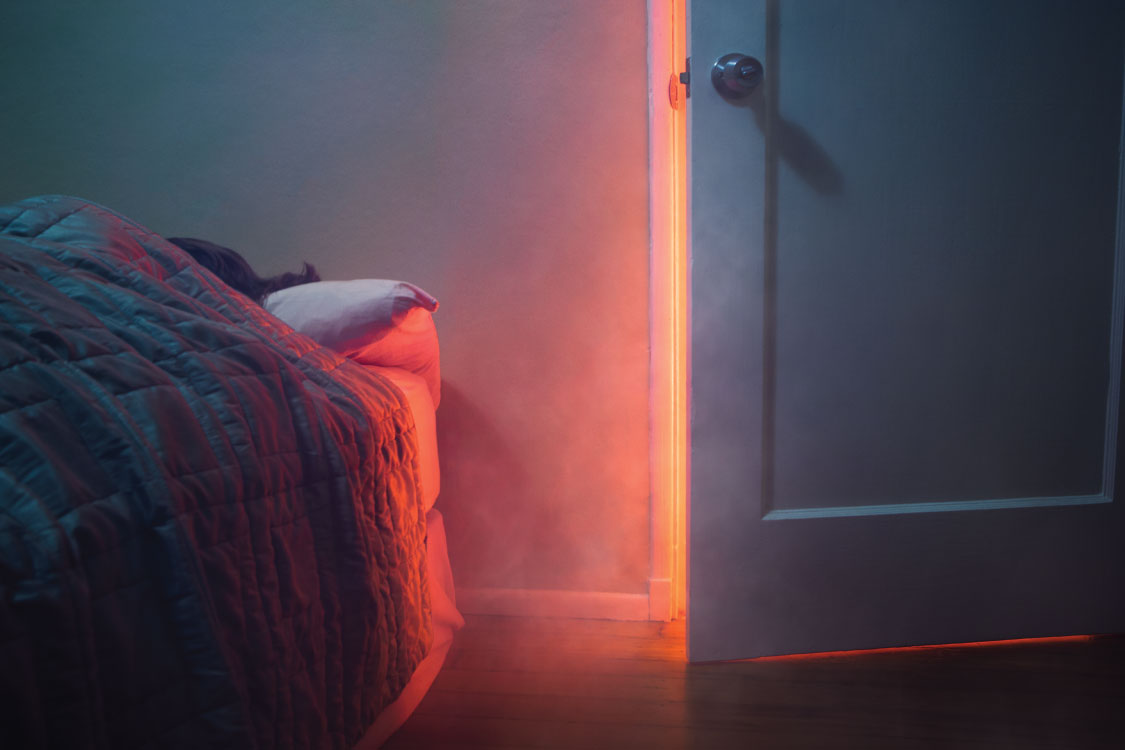3 March 2021
Different Types of Fires
We’re all too aware of the risks that fire poses to life, property and land, but what is less well-known are the different types of fire that can break out in certain environments. Each of the six types of fire brings different risks and require different actions and equipment to combat them. In addition to our in-depth guide to types of fire extinguisher, in this article, Fire & Security Group are going to detail what you need to know about the different types of fire.
Fires are separated into six different classes according to the fuel that is burning. Each class is identified by a letter. Let’s take a look at each category.

Class A Fires
Class A fires are identified as fires involving solid, organic materials – things like wood, paper and textiles. Due to the ever-present nature of these types of materials, Class A fires are extremely common – everything from furniture to materials in bins can cause a Class A fire, so business owners need to be extremely vigilant to minimise the risks.
There are a number of fire extinguishers that can be used to tackle Class A fires, but the most effective method of nullifying Class A flames is a water fire extinguishers.
Class B Fires
Class B fires are fires involving flammable liquids. Cleaning solutions, petrol, chemicals and paints are particularly common sources of Class B fire, and these types of fires are often the most dangerous due to the speed at which they can spread. As these fires are fuelled by a liquid, it’s crucial that a dry extinguisher is used to combat them; dry powder, CO2 and foam extinguishers are the only suitable methods. These types of extinguishers form a blanket over the burning liquid, which suffocates the flames.
Use of water extinguishers, in particular, will worsen the situation rather than rectify it, as the water will help the flammable liquid spread.
Class C Fires
Class C fires are fires involving gases like butane. These are extremely dangerous and difficult to tackle with a fire extinguisher, but the extinguisher designated for gaseous fires is a dry powder extinguisher. The reason for this is that dry powder extinguishers separate the fuel from the atmosphere, which prevents the fire from growing.
It is important to note that whilst it is possible to combat a Class C fire with a dry powder extinguisher, if you notice a gas leak or fire, the most effective action is to first shut off the gas supply entirely, before calling the emergency services.
Class D Fires
Fires involving metals are categorised as Class D. Metal fires might be less common than others, but they can pose significant risks to the structure of a building – metal can soften under extreme heat, which can lead to a collapse in the worst of cases.
To combat metal fires, only dry powder extinguishers are suitable. Special dry powder extinguishers exist which are designed specifically for combatting metal fires.
Class E Fires (Electrical)
Rather than being labelled ‘Class E’ fires, electrical fires are given their own self-explanatory name. This is because electricity will start a fire, but it’s not considered a fuel, as once the fire has started, other materials are burning – not the electricity.
They’re another very common type of fire, caused by faulty appliances, poor wiring, short circuits or misuse of electrical equipment. First and foremost, it is absolutely crucial that water extinguishers are not used on electrical fires; dry powder and CO2 extinguishers are the only suitable types for electrical fires.
Class F Fires
Class F fires are fires involving cooking oils and fats. These are separate from Class B fires involving flammable liquids, so it’s important to make this distinction when it comes to using a fire extinguisher. For Class F fires, the correct extinguisher to use is a wet chemical extinguisher – this is the only type of extinguisher that is suitable. For things like chip pan fires or smaller fires on hobs, for example, a fire blanket can be very effective if you have one present.
How do I know which fire extinguishers I need?
The type of fire extinguishers you will need depend on the types of fire your business is at risk from. This, in turn, is influenced by the environment you operate in. Restaurants and catering facilities, for example, will have a higher risk of Class F fires involving cooking fats and oils, whereas an office space might be more susceptible to Class A fires involving paper and other organic materials.
The best way to properly determine which class of fire your property is at risk of, and therefore which fire extinguishers you need is to carry out a fire risk assessment. A fire risk assessment is a detailed evaluation of your entire property, determining where your fire safety and emergency preparedness needs improvement.
By contacting a qualified, experienced fire protection company like Fire & Security Group, you’ll receive a full fire risk assessments from our experts, who can advise you on required fire safety training and improvements. We can install any and all types of fire extinguisher in any quantity; whether you need a single Class A extinguisher or multiple extinguishers of varying types, you can trust us to supply and install the high-quality equipment you need.
For more information about our fire alarm services or fire extinguishers, simply contact us today and we’ll be happy to help.

